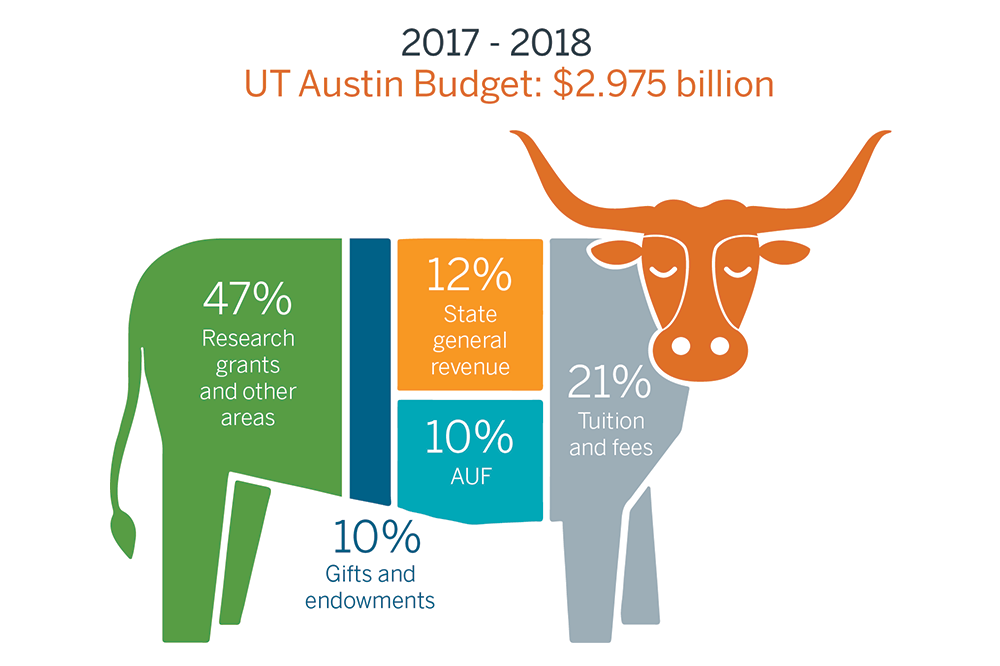Higher Education Funding 101
UT Austin's Budget and Sources of Revenue
UT's Budget: Where does the money come from?
The university’s ability to educate students, deliver cutting-edge research, and innovate for the people and businesses of our great state depends on consistent and appropriate funding from the state, donors, grants, and tuition. Since 2009, the state and tuition revenue sources of UT Austin have declined or remained flat. In 2011, higher education suffered substantial cuts to base funding levels. In 2018, the state of Texas provides 12 percent of the university’s revenue, whereas in 1984, it provided 47 percent.
Courtesy The University of Texas at Austin
Formula Funding: How are state funds split by the Legislature?
Formula funding is how state higher-education institutions equitably distribute available state funds. They allocate a base level of funding primarily based on enrollment. The formula is calculated by the Higher Education Coordinating Board and its recommendations are presented to the Legislative Budget Board in June of even years. As an example, in the 84th Texas Legislative Session, the legislature’s finalized budget included Dell Medical School in health-related formula funding, appropriating $12.1 million for the first medical school to be built on an AAU-recognized research university in 50 years.
The PUF: Where does this money come from and how is it divided?
The Permanent University Fund (PUF) was established in 1876 to provide resources for The University of Texas. The PUF’s value comes from oil and minerals from 2 million acres of landed granted by the Texas Constitution. Revenue from the PUF is invested and the annual return is placed in the AUF, the Available University Fund. UT Austin’s budget is 10 percent funded by the AUF, after sharing with The University of Texas System and the Texas A&M system.
Tuition Reregulation: What is the benefit of tuition-setting ability for public universities?
In 2003, the Capitol granted tuition-setting authority to the governing boards of public colleges and universities instead of the Texas State Legislature under HB 3015. This was due in part to a handicap posed on universities from deep cuts in state funding to higher education and the need for flexibility for institutions to remain competitive with national peers. Legislators understood that this vote would result in decreased state support and increased tuition. UT Austin continues to support the flexibility of setting tuition and fees, upon approval by the corresponding board of regents.
From the Alcalde, the official publication of the Texas Exes.



